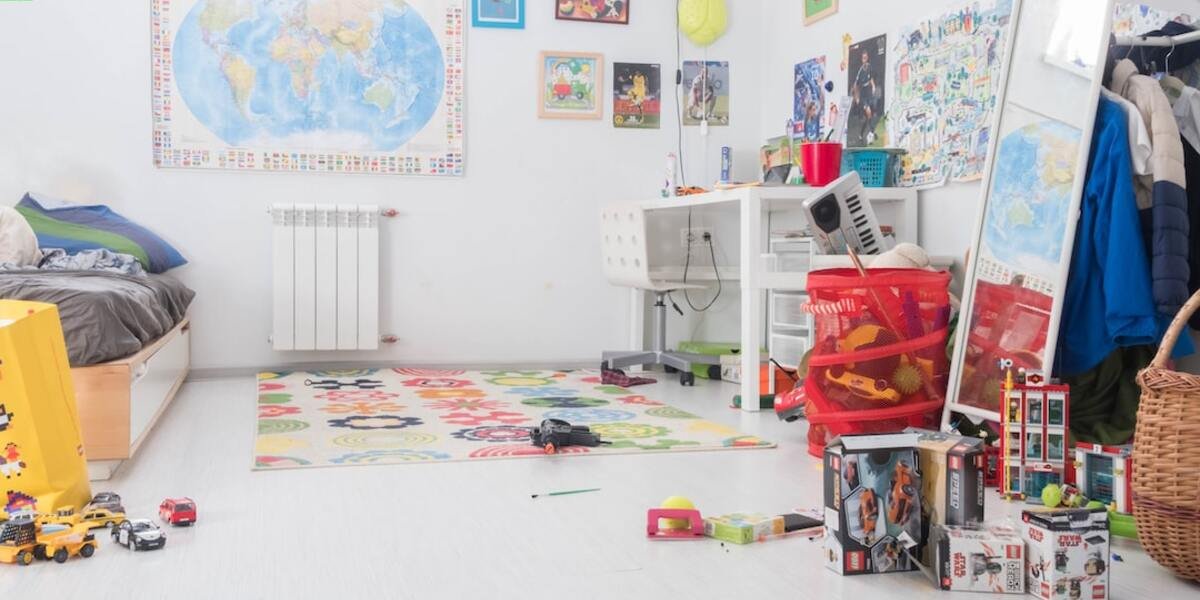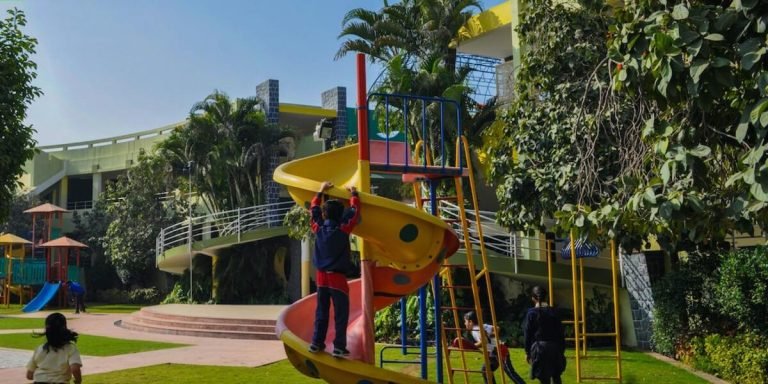Learning is Fun: Exploring Innovative Approaches in Childhood Education
The mantra “learning is fun” has been bandied about for generations, but truly embodying this approach in a classroom setting can be quite challenging. It’s not just about making classes more enjoyable; it’s also evolving the learning process to become an engaging and interactive experience where children actively participate rather than passively soak up information. This shift towards activity-based learning taps into this potent pedagogical strategy.
Activity-based learning:
- Fosters creativity
- Develops problem-solving skills
Lessons as hands-on activities:
- Encourage exploration and play
- Help children grasp concepts faster
- Improve retention as children have fun while learning
Exposure to innovative educational methods:
- Feels less like work, more like productive playtime
- Reinforces the idea that ‘learning is fun’
Did you know?
Did you know that learning through play, an innovative approach in childhood education, can enhance a child’s cognitive development significantly? A study by the University of Cambridge found children who engage in pretend play have enhanced language skills and better social understanding.
Understanding the Core Principles of Activity-Based Learning
No longer do the tables, chairs and whiteboards define a classroom in 2023. A crucial part of modern education is technology integration which brings about abundant creative methodologies to make learning interactive; one such way is through Activity-Based Learning (ABL). Considering an educational environment where ‘learning is fun,’ let’s delve into understanding the core principles that mark its essence.
In activity-based learning, children learn by doing rather than passive absorption from textbooks or monotonous lectures. This strategy emphasizes experiential learning which makes it easier for them to understand and remember concepts long-term because they truly engage with their lessons instead of just memorizing it at face-value level. Activities like role-playing, experimenting or working on projects related to real-life situations give students more liberty and excitement towards studies – thus making ‘learning’ fun indeed!
Technology plays a vital role here as smart classrooms become standard in schools worldwide. Innovative software helps tailor activities according to individual student needs while offering comprehensive progress tracking options for educators too – ensuring optimized knowledge intake without compromising on enjoyment element whatsoever! Moreover, widely accessible online resources can support these experiences further enhancing diversity in content consumed by young eager minds leading towards better-rounded development overall.
Defining Activity-Based Learning in Modern Education
Activity-Based Learning (ABL), an innovative approach in modern education, is revolutionizing traditional teaching methods. This amazing concept brings the principle “learning is fun” to life by engaging children proactively in their learning journey.
In 2023’s digital era where technology integration in education has become a norm, ABL scores high on delivering hands-on practical lessons — which are more relatable for our tech-savvy young minds! For instance, apps and interactive e-books engage kids with vivid graphics and captivating narratives that stimulate mental growth while keeping fun intact.
Firstly – key elements of ABL are ‘experience’ & ‘reflection’. Kids indulge in activities; they explore ideas and learn concepts practically. Post-activity reflection enables them to understand what was learned from these endeavors.
Secondly – it involves cooperative learning where group activity promotes collaborative skills among peers alongside academic acumen.
Thirdly – logical thinking fosters as children solve puzzles or perform tasks demanding intellectual investment other than rote memorization!
Lastly – integrating assessments within play-based exercises makes evaluations less intimidating fostering continual progress tracking without added pressure on tender minds!
How Activity-Based Strategies Enhance Engagement and Fun
Activity-based learning, when applied thoughtfully and strategically in today’s digital classrooms, can make every child feel that “learning is fun”. Let’s delve into how you can use this approach to enhance engagement for your students.
The core concept behind activity-based learning involves breaking away from traditional teaching methods like rote learning. Instead of sitting through long hours of lecture-style instructions where the focus lies on remembering information rather than understanding or applying it, learners engage in hands-on tasks related to their lessons.
For example, if a science lesson covers plant growth and photosynthesis, instead of just reading about these processes from textbooks or watching videos online – children would get a chance to grow plants themselves! This experiential process not only makes complex topics easier for them but ensures they find joy while gaining knowledge; embodying the saying ‘learning is fun’.
Another benefit? It fosters deep thinking skills. When youngsters actively participate in projects relevant to what they’re studying — making models or conducting experiments —they naturally start asking questions.
They dig up problems needing solutions which opens doors for critical thinking.
Fast-forward 2023: as technology continues integrating itself fluidly with education systems worldwide—activity-based strategies have seen new dimensions thanks largely due to software apps designed specifically keeping young minds at heart!
These educational applications contain interactive games ensuring each user feels partaking more an exciting adventure rather completing boring homework assignments—leading increased motivation participation levels among kids all ages groups globally thus proving once again Learning really be Fun!
The Role of Interactive Activities in Promoting Enjoyable Learning Experiences
The role of interactive activities in illuminating the path to enjoyable learning experiences is unparalleled, especially at a time where technology integration in education has grown rapidly. It’s 2023 and classrooms have drastically changed from being teacher-centered to learner-centered spaces. Gone are the days when rote memorization was considered an effective way of teaching; these methods have been replaced by interactive sessions that make ‘learning’ synonymous with ‘fun’.
Concepts are not just explained anymore but experienced through hands-on tasks or digitally aided exercises.
Incorporation of activity-based learning via technological aids such as digital games, coding puzzles or virtual simulations significantly enhance a child’s interest levels while fostering their comprehension abilities simultaneously. Imagine understanding complex science principles via fun-filled experiments rather than static diagrams on textbooks! Or comprehending math problems through engaging online puzzles instead of monotonous blackboard explanations!
The difference can be staggering for young minds who perceive this innovative approach as playtime rather than study hours.
Interactive activities don’t merely engage students visually, they demand active participation which ensures information retention and encourages critical thinking—key skills required for future professionals navigating our tech-dominated world— all while making learning excitingly enjoyable.
Education must be designed not only to ensure knowledge absorption but also aimed at nurturing curiosity among kids and promoting lifelong love for learning- integrating technology with traditional education seems like stepping towards achieving precisely that goal.
Incorporating Games and Play into Curriculum Design
In the fast-paced world of 2023, children are increasingly growing up with technology at their fingertips. It’s integral to integrate this reality into our education system for a brighter future – one where learning is fun! To make learning an enjoyable journey and not just another tedious chore, incorporating games and play into curriculum design is pivotal.
Play-based approaches have now moved beyond traditional classrooms worldwide. Adapting activity-based learning methodology in schools can significantly increase students’ interest levels while ensuring that they grasp complex concepts effortlessly.
Ever wondered how you could transform your child’s distaste towards math or science? Well, integrating educational video games based on these subjects may prove beneficial in overcoming such common roadblocks. These interactive platforms create a real-world scenario which makes it easier for them to comprehend abstract ideas – all whilst having fun!
On the other hand, think about language lessons — often considered monotonous by most young learners but imagine turning those dull phrases into catchy rhymes or songs? Sounds interesting right?
This method aligns perfectly with ‘learning through doing’ concept which many psychologists highly recommend as it allows kids to explore their abilities making every task an adventurous process rather than ticking off checkboxes from a mandatory list of tasks assigned by teachers!
Moreover, when complicated theories become exciting puzzles lying ahead waiting to be solved then exploring turns out more thrilling than exhausting; after all who doesn’t like unravelling mysteries?
Utilizing Technology to Create Immersive Learning Scenarios
In the world of education, technology has created a significant shift. Traditional methods are giving way to innovative interactive activities for an enjoyable learning experience. To truly understand how “learning is fun,” one needs to dive deeper into the concept and realize the potential it carries.
One great example where we see this fusion takes place between activity-based learning and technological advancement is in immersive learning scenarios. These can happen with tools such as virtual reality (VR), augmented reality (AR) or other online platforms that provide real-time experiences while never having to leave home!
To make these scenarios possible involves carefully designed lesson plans incorporating suitable apps or software programs related not only subject-wise but also considering age-appropriate interfaces. Teachers play a pivotal role here by effectively facilitating technology integration within instruction ensuring active participation from all learners.
There’s something undeniably exciting about ‘doing’ instead of just ‘listening.’ If students participate actively in painted narratives using digital aids – they weave connections faster, absorb information better leading improved understanding & retention rates—a clear testament that Activity Based Learning harnesses playful elements solidifying knowledge creation.
Evaluating Success Through Learner Feedback in an Active Environment
How do we gauge success in this context? The answer lies within learner feedback from these dynamic activities. Learner feedback acts as a key performance indicator for any educational system today, especially when technologically-driven, interactive teaching methods stimulate active environments.
When it comes to ABL enhanced by technology, immediate benefits are seen via real-time responses provided by students during lessons or games designed specifically for particular subjects and concepts. These instant insights help educators identify gaps in understanding quickly and address them promptly which keeps learning seamless and engaging for each child.
Gauging Student Response for Improved Participation
A key component to activity-based learning in technologically driven classrooms revolves around gauging student response for improved participation.
The effectiveness of any pedagogical model hinges on how well students respond to it. Evaluating their feedback plays a crucial role in understanding what works and what doesn’t within an active environment like ours.’ Learning isn’t only about absorbing facts but also developing critical thinking skills by interacting dynamically with the content at hand.
With activity-based learning aided by technology such as augmented reality tools or interactive smart boards, educators can create real-world scenarios. This way, children don’t just learn passively — they actively participate leading to better comprehension and retention. But herein lies another task – measuring these responses accurately for optimizing further teaching methods.
Digital quizzes are one method educators use extensively today – They’re swift ways to test knowledge absorption levels pivoting learner involvement into gamified interactions thereby reinforcing our belief– ‘learning is fun’. Tools like Kahoot! make quizzing seamless while giving teachers valuable inputs regarding each child’s progress using data analytics backends supplied by such platforms.
Assessing Educational Outcomes with Innovative Assessment Techniques
Incorporating technology into education has changed the landscape. Activity-based learning, a method that makes ‘learning is fun’ mantra truly come to life, has become even more powerful with this integration of tech tools. One pivotal aspect of activity-based learning in today’s techno-driven classrooms is assessing educational outcomes using innovative techniques.
Activity-based learning typically comprises hands-on tasks where children interact either individually or collaboratively. It empowers learners to explore factual situations and implement learned theoretical concepts practically making it an effective tool for ensuring deep-rooted knowledge building in the year 2023.
Formulating methods for evaluating success then becomes critical because conventional testing procedures may not accurately reflect student understanding following these activities.
Embracing modern digital platforms can be beneficial here – they are capable of catching subtle hints regarding learner progress which might otherwise stay unnoticed during typical paper-and-pencil tests.
For instance , virtual reality games designed around curriculum topics allow teachers to monitor how well students navigate through challenges thus providing insights about concept comprehension levels amongst students while keeping them engaged as ‘learning is fun’.
Similarly, project assignments completed on online interactive platforms enable real-time teacher feedback mechanism reinforcing timely corrections and augmenting better assimilation of information by effectively integrating technology with activity based pedagogy .
Conclusion
In short, the journey of learning is more akin to an adventurous role-play filled with life’s most vibrant colors than a dry recitation of facts and figures. It wouldn’t be wrong to state that “learning is fun” when painted in innovative shades, not merely as some cliché phrase designed for motivational speeches. As parents or educators involved in the process, our responsibility isn’t simply about making children pass their exams but enabling them live through exciting experiences; thereby shaping independent thinkers and lifelong learners who embrace knowledge like second nature.
So why wait? Strap on your explorer hats and set out on this incredible adventure with your little ones! Each step taken can surprise you by revealing unexpected depths within young minds waiting eagerly for meaningful engagement.
Our website serves as a trusted guide along this thrilling path—providing beneficial insights into effective childhood education strategies while bridging gaps between parents and educators harmoniously. Endless resources await at just a click away; explore today because every moment counts in crafting spectacular tomorrows!







